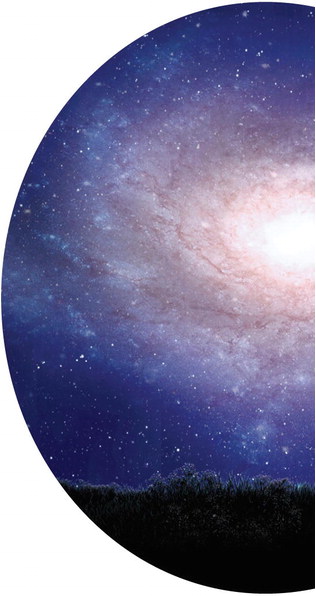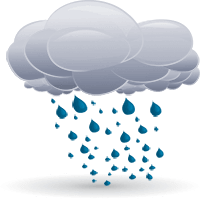Thanks to the efforts of Dark Skies programs sprinkled throughout the Hill Country, Central Texas has a number of prime locations for stargazing. This is good news for people hoping to make wishes on some falling stars this August during the Perseid Meteor Shower.
Regarded as one of the most reliable meteor showers in the celestial calendar, the Perseids run from July 14 to Sept. 1, with its peak hitting on the weekend of Aug. 11-12.
“The Perseids meteor shower comes from the comet 109P/Swift-Tuttle,” Alan Martinez, Texas State Astronomy student and webmaster for the University’s Astronomy Club, said. “It’s a comet in Jupiter's orbit, and every year as the comet gets closer to the sun in its orbit, it begins sublimating material off its surface.”
This summer, Martinez is studying Swift-Tuttle and was excited to share information about the comet as it traverses through the solar system, causing the annual light shower we know as the Perseids.
“Think throwing a piece of really dirty dry ice and seeing the vapor path as it's in the air,” Martinez said. “Ultimately, that material is carried toward Earth where it enters our atmosphere and results in those really cool meteors that we see.”
For the best meteor-shower viewing (and optimal wish-making), stargazers are encouraged to find a destination where the stars will be unobstructed by light pollution. This is where all of us in the Hill Country are in luck, because Central Texas is home to six of the state’s seven certified Dark Skies communities, including Bee Cave, Blanco, Dripping Springs, Fredericksburg, Horseshoe Bay and Wimberley Valley. These Dark Skies locations have passed smart-lighting ordinances in order to shield the area from encroaching light pollution. Dripping Springs was the first community in Texas — and only the sixth in the world — to become a certified Dark Sky Community. With Blanco and Wimberley joining the initiative, these towns have broadened the commitment and scope of protecting the night sky within the Hill Country.
Though Martinez will be completing his internship program in Houston at the time of the Perseids, he recommends driving out to Wimberley to view the meteor shower. “It’s an official Dark Sky community away from some of the light pollution of I-35,” Martinez said. “The absolute best times to see meteors would be between midnight and sunrise, but some should still be visible earlier in the night if you're lucky. There should be around 90 meteors per hour, which is pretty awesome.”

Additionally, with the moon phase a waxing crescent at only 41% full, that natural light will have little impact on viewing the meteors as they streak across the sky.
Other nearby meteor shower locations include Enchanted Rock State Natural Area, which is designated an International Dark Sky Park. Campers in the park can enjoy an unobstructed view of Big Sky Country. Sunday to Monday night reservations are available, and due to the date being at the start of the week, the park probably won’t be crowded. Reservations can be made online at tpwd.texas.gov/stateparks/ reservations or by calling 512-389-8900.
According to the American Meteor Society, viewers will have best results around 2 a.m., when the constellation of Perseus will be highest in the night sky. Stargazers don’t need to look directly at Perseus — or even know the constellation’s exact location in the night sky — to see the meteors.
However, for San Marcans curious to learn more about the night sky, the constellations and other exciting celestial phenomena, the Texas State Astronomy Club hosts public observatory nights every Wednesday from 7:30 - 9 p.m. during the Fall semester (if the skies are clear).
“We also got funded a brand-new telescope for our observatory dome, so hopefully it will be up and running this Fall for everyone to check out,” Martinez said. “The home telescope had been broken for the past couple years, so we had been getting by with our other — equally cook in my opinion — scopes, which we typically pull out.”
Pending clear skies, the next public observatory night will be Wednesday, Sept. 11 at 7:30 p.m. Check the organization’s website at astrotxst.org or visit its Instagram and Facebook at @astrotxst for updates. The Texas State Observatory is located on the roof of the Supple Science Building on Vista St. It is a nonprofit organization run solely by Texas State students.
The next meteor shower will be the Orionids, which are a medium- strength shower set to peak Oct. 20. In a normal year, the Orionids produce between 10-20 meteors per hour, but because the full moon occurs on the 17th of that month, the waning gibbous moon phrase will interfere with the viewing of this shower. However, the Orionids run from Sept. 26 to Nov. 22 — a rather long duration — thus giving night sky observers opportunities to catch these super-streaking meteors that occasionally produce bright fireballs. Watch for Orionid meteors on the mornings of Oct. 20 and 21, right after midnight and until dawn. The radiant centers on the Orion constellation, easily identifiable by the straight line of stars that form Orion’s belt, and is highest in the sky around 2 a.m.
For more information about stargazing and meteor- shower watching opportunities, visit the American Meteor Society website at amsmeteors. org. For information about Dark Sky Texas, visit idatexas.org.
Happy wishing!


